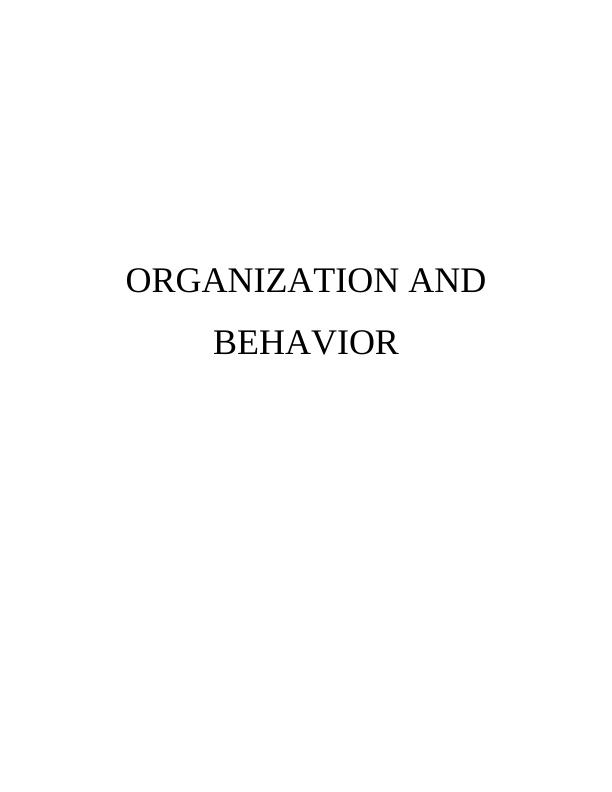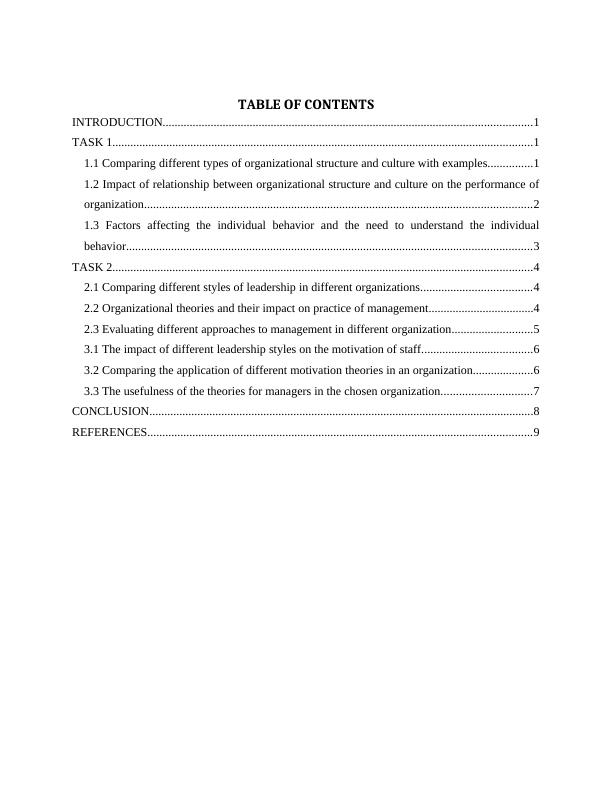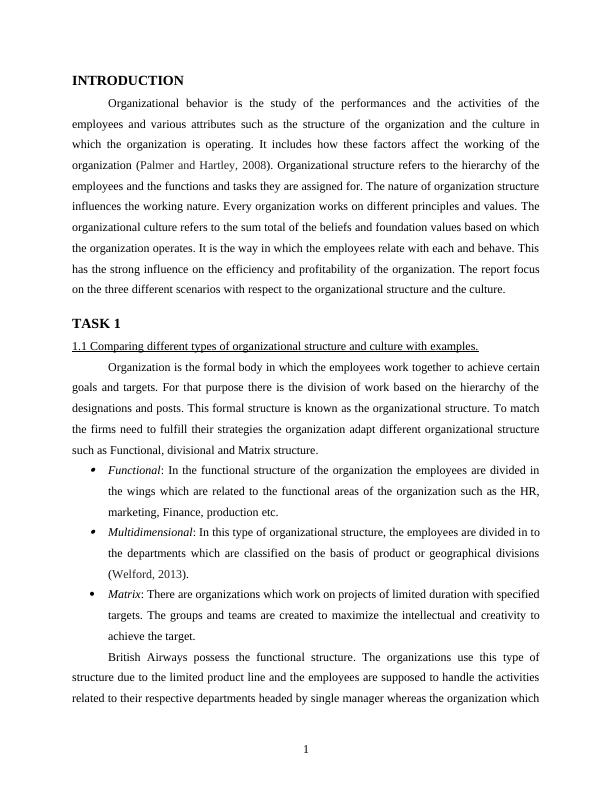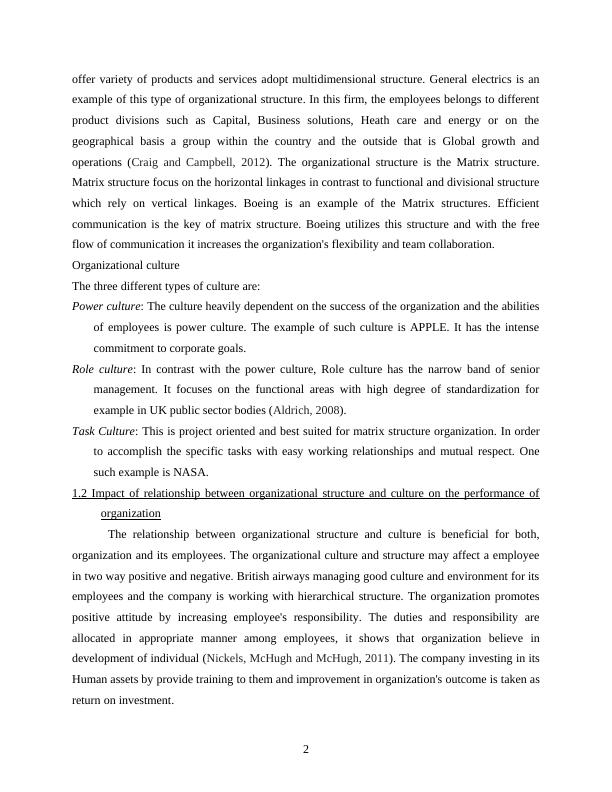Comparing organizational structure and culture with examples
12 Pages3668 Words432 Views
Added on 2019-12-03
About This Document
ORGANIZATION AND BEHAVIOR TABLE OF CONTENTS INTRODUCTION 1 TASK 11 1.1 Comparing different types of organizational structure and culture with examples.1 1.2 Impact of relationship between organizational structure and culture on the performance of organization2 1.3 Factors affecting the individual behavior and the need to understand the individual behavior. 4 2.2 Organizational theories and their impact on practice of management 4 2.3 Evaluating different approaches to management in different organization 5 3.1 The impact of different leadership styles on the motivation of staff. 6 3.2
Comparing organizational structure and culture with examples
Added on 2019-12-03
ShareRelated Documents
End of preview
Want to access all the pages? Upload your documents or become a member.
How organizational structure and role shape the performance of business
|16
|5248
|52
Report on Organizational Behavior Features
|17
|4259
|153
Report on Organizational Behavior Ryanair Airlines
|11
|3238
|171
Theory Of Management - Assignment
|13
|2333
|185
Characteristics of Organisational Structure and Culture
|15
|1056
|73
Organisation behaviour Assignment : CAPCO
|20
|6451
|257




